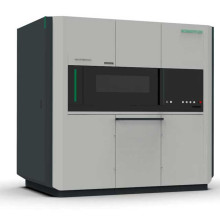Slewing bearings and condition monitoring for wind power
- Details
- Hits: 10146
Schaeffler has been offering for around 40 years slewing bearings-Solutions for wind turbines. The components for onshore and offshore use are reliable and are designed to withstand the increasing performance of the systems CO2 footprint focused mindfulness. From compact rotor bearings to hydrodynamic plain bearings for the Transmission, vibration-causing generator bearings through to blade adjustment and wind tracking – Schaeffler components are condition monitoring capable and efficient.
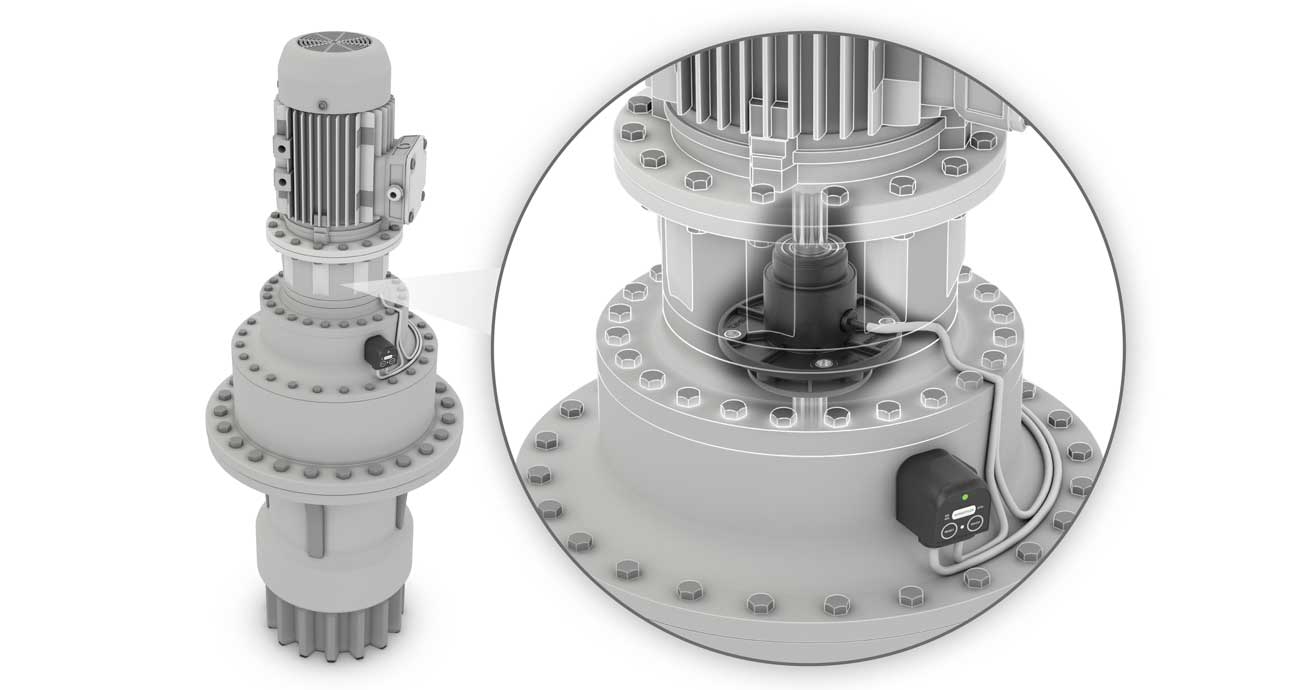
Contents
- Most powerful wind turbine bearing test bench in the world
- Condition and torque monitoring for the wind turbine
- ZF wind power transmissions with connection to the Schaeffler Cloud
- Sensors for comprehensive monitoring of rotor bearings
- Analysis of grease prevents rolling bearing damage
Most powerful wind turbine bearing test bench in the world
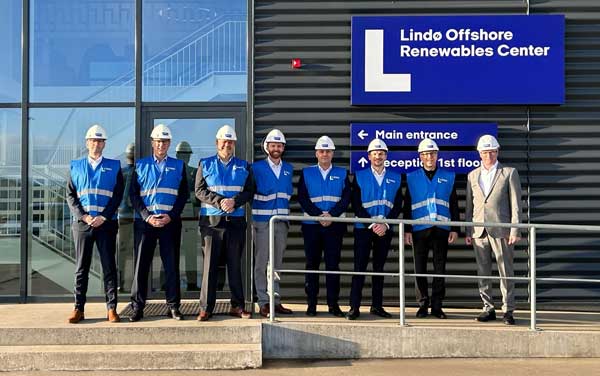 06.02.2024/XNUMX/XNUMX | As wind turbines become ever larger, this is coming Rotor bearing plays a fundamental role as an integral part of the drive train. This is where all the forces and moments that the wind exerts on the turbine add up. As a market leader and strategic development partner, Schaeffler faces the challenge of actively contributing to the further development of multi-megawattWind Turbines contribute.
06.02.2024/XNUMX/XNUMX | As wind turbines become ever larger, this is coming Rotor bearing plays a fundamental role as an integral part of the drive train. This is where all the forces and moments that the wind exerts on the turbine add up. As a market leader and strategic development partner, Schaeffler faces the challenge of actively contributing to the further development of multi-megawattWind Turbines contribute.
Lindø Offshore Renewables Center
In Lindø, Denmark, is being built at LORC (Lindø Offshore Renewables Center) the world's most powerful test bench for rotor bearings. The investment, which is worth a mid-double-digit million amount, also includes funding from the Danish Greenlab program. Specific testing programs should be running as early as the end of 2025.
LORC is working on the construction of the test bench R&D Test Systems together, a provider of test benches for the wind industry. Schaeffler has significantly defined the specifications of the test bench and will be the first customer to test its rotor bearings for future generations of wind turbines on the test bench in cooperation with OEMs.
“We are a key market and technology leader for Warehousetechnologies in the wind power industry. With LORC, one of the most experienced test bench operators for wind energy drive trains, we have found a partner who will help us to further expand our know-how and product performance," emphasizes Dr. Michael Pausch, CTO Industrial Schaeffler. "This gives us the opportunity to develop the next generations of wind turbines with suitable Testing and method development.”
Astraios slewing bearing test stand
“With our slewing bearing test stand 'Astraios', which was the most powerful test stand in the world at the time, we have been gaining valuable insights for the development of bearing solutions since 2011,” says Bernd Endres, Head of the Wind Business Unit, Schaeffler Industrial. “With the new test bench, we are now able to advance into new and future dimensions and contribute to the faster development of reliable multi-megawatt systems.”
Closed loop engineering for wind turbine bearings
Schaeffler has been offering reliable slewing bearing solutions for onshore and offshore wind turbines for around 40 years. Schaeffler rolling bearings can be found in every second to third wind turbine worldwide. With Closed-loop engineering The company takes a comprehensive approach to the development of wind power bearings.
In addition to the pure development of bearing solutions, Schaeffler experts also support system development through system simulations and testing Field measurement campaigns. The knowledge gained flows back into the further development of customer projects, design tools and the development of new storage solutions. Schaeffler's experts work closely with OEM developers to further increase the reliability of wind turbines and to make renewable energies such as wind power more economical. The new test bench represents an important building block with regard to the coming decades.
Condition and torque monitoring for the wind turbine
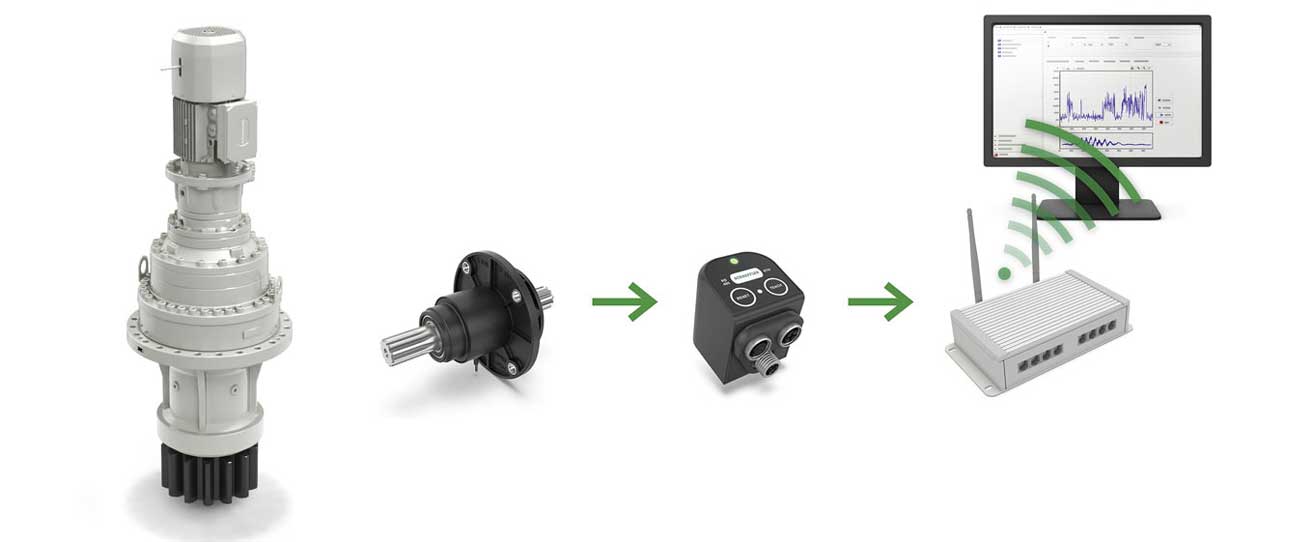
April 16.04.2019, XNUMX | The development partners Schaeffler and Bonfiglioli have developed a compact Industry 4.0 solution package. Schaeffler is combining its two proven measuring systems “Smartcheck” and “Torquesense” into a new condition and torque monitoring system.
While the vibration analysis If damage to the main bearings and other large slewing bearings is detected very early using the Smartcheck, the precise torque signal can be used to detect and limit, among other things, load peaks and their frequency. With his expertise, Bonfiglioli has developed application-based algorithms that enable the processing of this and other data into information over the entire operating time of a wind turbine.
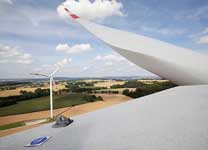 Sensor technology protects WKA rotor blades from ice and damage
Sensor technology protects WKA rotor blades from ice and damage
The information is made available online as reports on relevant performance indicators, for example the general “health status” of the company gearmotors, potentially critical operating states or unusual behavior of the Wind tracking system. Overall, customers benefit from fewer unplanned downtimes due to overload and, depending on the load, generally longer maintenance intervals thanks to predictive monitoring.
Condition and torque monitoring
The SmartCheck monitors the condition of bearings, gears as well as electric motors, pumps, fans and aggregates in a frequency-selective manner based on structure-borne sound vibrations. With just one measuring system, abnormal frequencies can be automatically assigned to the damaged components. There is also a in the device temperature sensor integrated.
The torque and speed signals of the Torque scythe are managed via the Smartcheck, pre-processed and made available with the vibration signals, which are also analyzed, for machine control and/or maintenance. The addition of the condition monitoring system with the operating data torque and speeds opens up several scenarios: In the simplest case, torque peaks and their frequency can be monitored and the degree of utilization can be evaluated and maintenance measures can be derived based on the load. The signals can also be integrated into the operating strategy of drives and thus initiate torque limitations or shutdowns.
The new system is particularly suitable for Adjusting and rotary drives in the wind and ship industries, in large cranes, construction and mining machines with rotating towers and for winches. The torque signal can be used here not only for monitoring, but also for gentle and precise torque control or tension band control.
Pilot project for the wind industry
Schaeffler is currently developing a first pilot project for wind power yaw geared motors from Bonfiglioli. In this application, the load data compressed using the Smartcheck is compared with predefined limit values and the results are compared using a Gateway transmitted wirelessly to Bonfiglioli. The monitoring system for geared motors is self-sufficient and not connected to the system control, so it can be easily retrofitted if the geared motors are replaced.
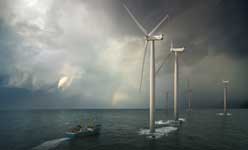 Couplings, brakes and monitoring for the wind turbine
Couplings, brakes and monitoring for the wind turbine
Bonfiglioli's goal with the new system is to reduce overloads Azimuth drives to monitor, to increase lead times for maintenance operations and to be able to define maintenance operations based on load rather than time. To integrate the Torquesense module into the power flow of the geared motor, it is placed between the motor and the gearbox. However, the measuring system can also function in lubricating oil and offers decisive advantages for integration into the drive train, such as: high measuring accuracy (approx. 1% of the measuring range), non-contact measuring principle, no change in the load capacity and torsional rigidity due to the sensor shaft, and a low influence of temperature Service life and measurement accuracy as well as integrated speed measurement.
Torque sensors easily integrated
The Torquesense consists of a magnetically conditioned shaft piece and a sensor housing. This does not have to completely enclose the shaft. Depending on the desired accuracy and interference immunity, single-sided mounted or U-shaped versions are also possible. Because the measuring principle contactless the torque can also be measured from the outside through a non-magnetic housing.
The sensor module can then be mounted from the outside. With Torquesense, shaft diameters of up to around 100 mm are possible depending on the customer and application; There are already sensor units in various standard diameters. The measuring range extends from 100 Nm up to 20 kNm. Due to their principle, the sensors have a high linearity and an extremely small hysteresis.
ZF wind power transmissions with connection to the Schaeffler Cloud
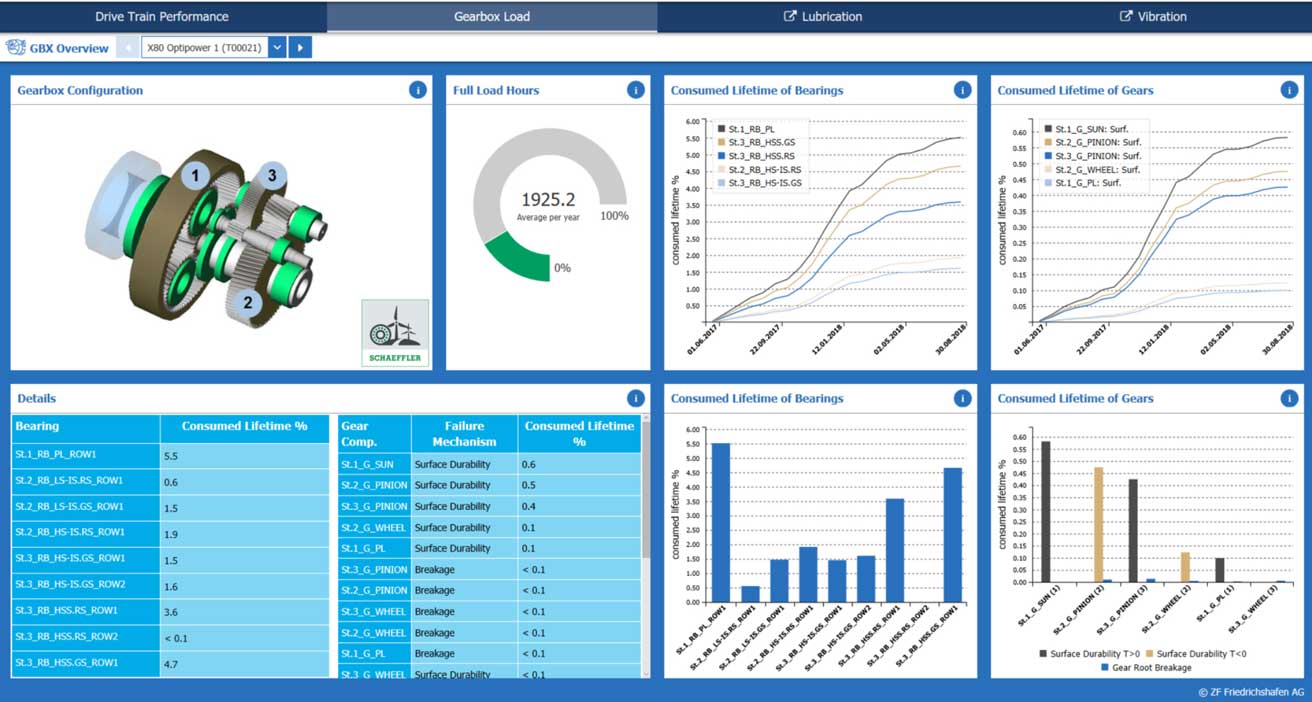
November 26.11.2018, XNUMX | Develop as part of a cooperation ZF Friedrichshafen and Schaeffler new solutions for predicting service lives of Wind power transmission Components based on actual stresses in operation. The first have been supplying this since September Sensors and condition monitoring systems equipped wind power gear units to a cloud-to-cloud solution.
Idea of a platform for wind power gearboxes
The basic idea of the project is to combine the ZF software solution for wind turbine gearboxes together with the expertise of other specialists in an intelligent system Platform to make available. This gives operators of wind turbines an aggregated view of the wind turbine gearbox.
Schaeffler is the preferred partner for here Rolling and represents Analyzes of roller bearing loads ready. The assessment of the stress on transmission components is carried out by ZF. The project is designed to be open so that other companies such as lubricant experts or steerings providers can be integrated.
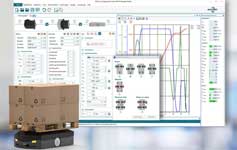 Motor and gearbox design energy-efficient and free of charge
Motor and gearbox design energy-efficient and free of charge
In the solution that has now been installed, preprocessed data from the Condition monitoring system and other sensors are continuously transmitted to the ZF cloud and torque and speed data are forwarded to the Schaeffler cloud. A detailed simulation model of the ZF transmission is implemented there as a virtual twin. The calculation results of the virtual twin are transferred back to the ZF cloud and are available on the dashboard of the ZF software for monitoring the transmission status.
Extends planning horizon for wind farm operators
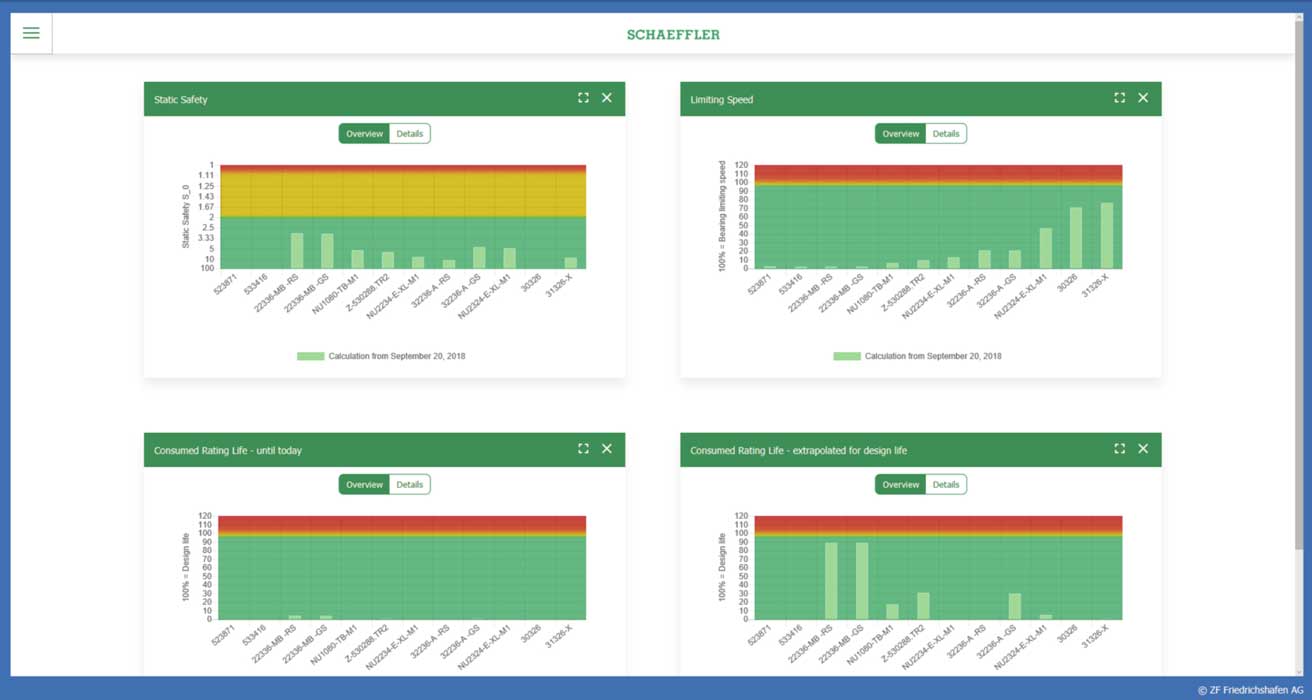
With a monitoring of the actual loads of a wind power transmission, the two companies create the basis for developing new data-based models. On the basis of the available input variables, the virtual twin is used in a first step to evaluate the service life and the static load safety of the gearbox bearings - analogous to the procedure for the certified design of the bearings.
In the next step, in addition to fatigue, other Damage Mechanisms must be taken into account. This is necessary because the service life of rolling bearings in wind power applications is usually not limited by classic material fatigue, but by surface-induced damage such as excessive wear or contamination of the lubricant. Schaeffler has already developed an algorithm for this that can be used to calculate the risk of surface-induced damage.
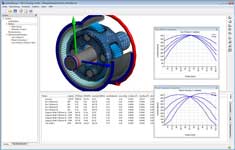 Gear calculation for gears with background graphic
Gear calculation for gears with background graphic
The transfer and testing of such new procedures for the state prediction of Bearings especially in the area of wind energy is part of the cooperation with ZF. By evaluating the calculation results of the Virtual Twin on the basis of load data, operating conditions that are damaging in the future can be identified at an early stage.
Thus it will be possible to reduce the lead time for initiating Maintenance measures on wind turbines compared to today's condition monitoring systems. In addition, appropriate countermeasures can be initiated in good time in order to prevent critical operating states of a wind turbine and thus to extend the service life of the bearing. This means that wind turbine operators will have a tool at their disposal that will significantly expand their planning horizon.
Alignment of the service life of bearings
Based on the actual accumulated stress that each Warehouse Having learned about power transmissions in the wind, Schaeffler will also be able to offer product recommendations that are optimized for the next maintenance interval with a comparatively long lead time. This can be a 1: 1 exchange of the respective bearing, an upgrade with a coating, a bearing with a higher performance Material or a special heat treatment. Viewed across the entire gear unit, the service lives of all bearings in the gear unit can be better matched with one another.
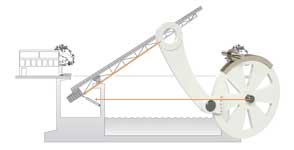 Modular industrial gear units for heavy-duty tasks
Modular industrial gear units for heavy-duty tasks
The next few months will be used for the installed IT infrastructure and data transfer to test a wind turbine in practice. The experience gained with its technical, legal and economic challenges will be incorporated into the subsequent series use.
Schaeffler on the Windenergy 2018
Sensors for comprehensive monitoring of rotor bearings
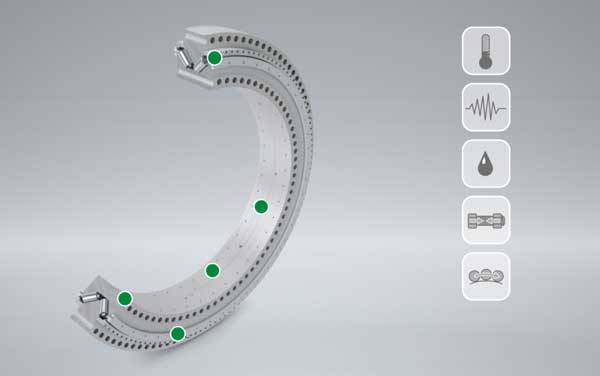 Sep 25.09.2018, XNUMX | How can typical damage patterns occur on rolling bearings in wind turbines, especially on the... Rotor bearing, detected early or even avoided? To solve this complex task, Schaeffler offers a combination of sensors that are able to monitor the critical influencing factors on these damage patterns.
Sep 25.09.2018, XNUMX | How can typical damage patterns occur on rolling bearings in wind turbines, especially on the... Rotor bearing, detected early or even avoided? To solve this complex task, Schaeffler offers a combination of sensors that are able to monitor the critical influencing factors on these damage patterns.
To the rolling bearings in drive train and to further improve the overall system and optimize system operation, real operating data offers great potential. For example, by evaluating and interpreting the collected data, safety factors can be determined more precisely and adapted to new developments. The company also develops together with pilot customers Sensor conceptsin order to be able to record relevant influencing factors on damage mechanisms in bearings that have not yet been monitored.
For the rotorFlange bearing Such a sensor combination consists, for example, of already established temperature and vibration sensors as well as the “Greasecheck” grease sensor, the new “Loadsense” pin and an equally new roller set glide path sensor.
Optical sensor system detects changes
The grease check is an optical one Sensor system, which can be used to detect changes in the fat condition at an early stage. The sensor head, which is only 5 mm in diameter, records the three parameters of turbidity, water content and temperature of the fat. By setting individual threshold values for turbidity and water content, customers can classify the condition of the fat in the company as good or bad. Of particular use:
With Greasecheck, wind farm operators can determine relubrication intervals For new systems, the complex procedure of taking fat samples and analyzing them is dispensed with. By constantly monitoring the condition of the grease, operators can respond to changes in the lubricant with maintenance measures, possibly even before damage to the bearing has occurred. If enough systems are installed, it will be possible in the medium term to set the relubrication intervals based on needs and thus save even more maintenance effort.
Slide-way sensor for monitoring the bearing preload
In the case of rotor bearing systems that are pre-assembled and flanged to the surrounding structure, the preload of the screw connections used has a direct influence on the performance and service life of the bearing, as it determines the load distribution in the bearing. Schaeffler developed the so-called loadsense pin to monitor this screw preload. This new sensor is based on the Thin-film sensors “Sensotect” and uses the measuring method of strain gauges.
In the Load sense pin This sensor system is coated directly on the front side and also on the outer surface of a small steel cylinder for temperature compensation. The sensor is pressed slightly oversized into a hole in the component to be measured and thus experiences the same expansion as the surrounding material. In contrast to the well-known glued strain gauges, the Loadsense pin is inserted directly into the bearing ring.
With it, the bias of the Gland of the flange bearing during operation so that the screws can be tightened as required. There is no need to check the preload at fixed intervals. The reliability of the storage system is increased and maintenance costs are reduced.
Roller set slide-way sensor detects operating conditions on the rotor bearing
The inductive sensor counts how often a rolling element passes the sensor head for a fixed number of rotor shaft revolutions. The rolling process The contact partner in the bearing always involves – if correctly designed – small sliding processes. This micro-slip between the driven bearing ring and the rolling element set changes the peripheral speed of the rolling element set and thus also the frequency with which a rolling element passes the sensor head.
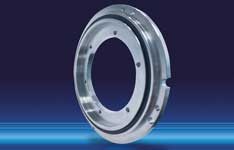 Special flange bearing enables 360 degree scanner rotation
Special flange bearing enables 360 degree scanner rotation
When known Internal rolling bearing geometry The average sliding path and micro-slip can then be calculated very precisely from the number of rolling elements passed, even when the rotor speed fluctuates, and can therefore be used to determine different load, friction and lubrication conditions. The measurement is simple, extremely reliable and allows conclusions to be drawn about the operating conditions (including the kinematics) of the rolling bearing.
Competitive advantages for pilot customers
As part of these development projects with Schaeffler, pilot customers have the opportunity to determine the critical influencing factors for the rotor bearings based on the measured data. Apart from the medium-term goal of being able to predict defined damage mechanisms in rotor bearings, it is already possible today with this sensor combination to detect several unfavorable ones Operating conditions in the warehouse to recognize and avoid them through an adapted maintenance and operating strategy or to initiate countermeasures at an early stage. Conditions that are unfavorable for the bearing are also identified, which can be remedied, for example, by relubrication, before bearing damage begins. In this way, the service life of the rotor bearings can be increased and operating costs reduced shortly after installation.
Analysis of grease prevents rolling bearing damage
 Sep 20.09.2012, XNUMX | The grease sensor FAG Grease Check from Schaeffler is used to analyze grease during operation of wind turbines. It can cause damage to the Rolling can be prevented in good time and switched from time-controlled to demand-controlled lubrication. The first applications of the sensor at leading manufacturers of wind turbines and large wind farm operators are already showing success.
Sep 20.09.2012, XNUMX | The grease sensor FAG Grease Check from Schaeffler is used to analyze grease during operation of wind turbines. It can cause damage to the Rolling can be prevented in good time and switched from time-controlled to demand-controlled lubrication. The first applications of the sensor at leading manufacturers of wind turbines and large wind farm operators are already showing success.
This method enables enormous time and cost savings, especially for systems that are difficult to access and critical. Around 90% of all rolling bearings are lubricated with grease. Is the lubricant worn out or dirty, rolling bearing damage is inevitable. To prevent this, monitoring the grease condition while the system is operating is an essential safety factor for the system operator. Since the actual condition of the lubricant can currently only be determined through complex removals and cost- and time-consuming laboratory measurements, the method of targeted over-greasing of the rolling bearing is usually chosen. However, increased flexing work and the resulting increased bearing temperature can also have a negative effect on the function of the rolling bearings.
Thanks to online monitoring with the FAG Grease Check, the user is always informed about the condition of the grease and only has to intervene when the grease no longer meets the physical properties required for reliable lubrication.
The Sensor head with a diameter of only 5 mm is embedded directly into the lubricant. Using the optical infrared reflection method, four parameters can be detected: water content, turbidity, thermal or mechanical wear and temperature. Intelligent evaluation electronics generate an analogue signal that informs the user quickly and easily about the condition of the grease. If a threshold value is set, a signal can be output directly as to whether the fat condition is good or bad. This means that if sudden changes in the fat condition occur, suitable measures can be taken immediately, including an emergency shutdown.
You might also be interested in...
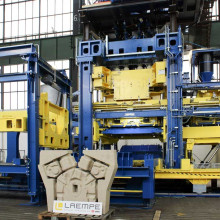
Profile rail guide using modern foundry technology from Laempe

Artificial Intelligence | trends and developments
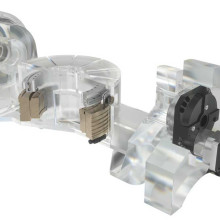
Planetary gear + strain wave gear precision from Schaeffler
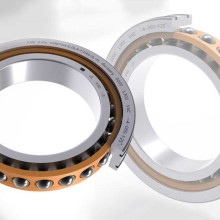
spindle bearing | The Vacrodur high-performance elements
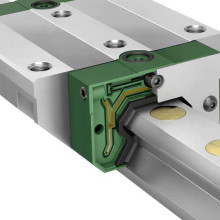
linear guide | Precise, light, durable
